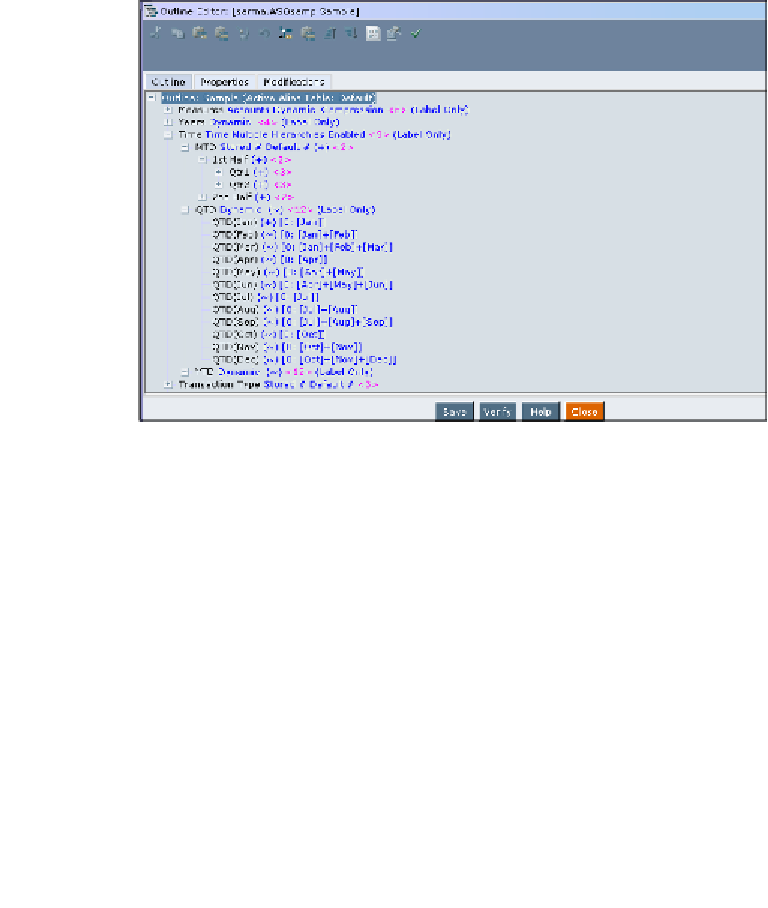Databases Reference
In-Depth Information
Dynamic hierarchies
Using
Dynamic
hierarchies, the data is not aggregated but is calculated at the time
of the data retrieval. Since the data is calculated at the time of retrieve, the response
time for the output is longer. The account dimension is always tagged as
Dynamic
hierarchies and you cannot change the account dimension to stored hierarchy. The
advantages of the
Dynamic
hierarchies are:
• Dynamic hierarchies can have formulas.
• Dynamic hierarchies can have any consolidation operator.
The following screenshot shows an example of how the
Dynamic
and
Stored
hierarchies are used in the sample ASO database. In the sample ASO database's
case, you can see that the
Time
dimension has
MultipleHierarchies Enabled
:
Outline paging
This is one major difference between a Block Storage application and an Aggregate
Storage application that provides a noticeable boost in performance. Unlike a BSO
application, where the database outline must be loaded into memory as a single
element, the database outlines in ASO databases are created and stored in what
can be considered a page-able format. This means that instead of Essbase loading
the entire database outline into memory, the page-able outline can be loaded into
memory either one page or section at a time. This can free up resources and can help
make data retrieval and data aggregations faster by reducing the amount of memory
consumed by large database outlines.


